Log in or create new account to save this product to your wishlist.
Pruning Conifers — How to do it right!
Conifers are trees with needles and cones rather than leaves and flowers. Pruning helps them stay in good shape while boosting their growth potential. Find out how in our comprehensive article.
Latest articles
7 MIN 22 Jul How to keep your lawn in shape this summer 9 MIN 15 Jul Watering Your Garden: 10 Top Tips! 11 MIN 15 Jul Is Your Grass Type Right for your Garden? 11 MIN 10 Sep Create Your Low-Maintenance Garden – Tips and Ideas 11 MIN 08 Sep The Ultimate Guide to Choosing the Perfect Hedges for Your Garden 12 MIN 30 Aug The Top 20 Evergreen Climbers to Transform Your GardenEvergreen and elegant conifers are beautiful, green, dense trees that provide excellent wind protection and privacy. But they grow fast, so it’s essential to establish a pruning schedule that keeps your trees healthy, green, and dense.
You can shape conifers into a range of shapes and sizes, but there are some rules to follow to ensure you prune for health, not just for aesthetics.
This article explains how to prune your conifer tree the right way.
Let’s get pruning!
What are conifers?
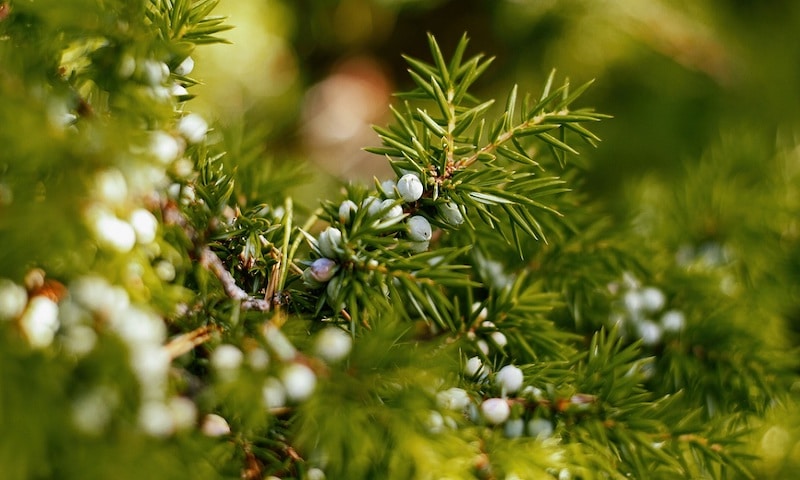
Sounds like a silly question, perhaps, but actually, the term “conifer” is often used to describe a range of bushes and trees, including
- European yew trees
- European larches
- Spruce
- Common juniper
- Pines
- False cypress
- Fir
- Scots pines
- Silver fir
- Swiss stone pine
A “coniferous” tree is (typically) an evergreen tree that grows needles instead of leaves (and cones rather than flowers).
Most conifers remain evergreen all year round, although some drop their needles in autumn, such as larches, swamp cypresses, and sequoias. Also, many coniferous trees are frost-hardy and drought-resistant, so they’re good choices to withstand the UK’s temperate climate.
The art of pruning conifers
Of course, conifers grow quite happily in nature without ever being trimmed. But that’s because they’re growing in the wild in ideal conditions. Your garden might not offer your conifer perfect conditions, so different rules apply.
There are many reasons why it’s beneficial to prune your conifers:
- Regular pruning provides your ideal shape and size. Trimming excessive growth and irregular branches prevents the tree from taking over your garden.
- You remove dead and diseased wood while pruning conifers, which helps support the tree’s health and vitality.
- There’s better air circulation within a pruned conifer, preventing diseases and pests.
- Conifers are fast-growing, so your trees may grow too large without a regular pruning schedule.
- Conifers are thirsty and can suck a lot of the moisture out of the soil, starving neighbouring plants of water and nutrients. Maintaining the conifer’s size is a good way of more evenly sharing your soil’s nutrients with nearby plants.
- Well-pruned conifers grow dense and deep green, offering excellent privacy and wind screening.
When is the right time for pruning conifers?
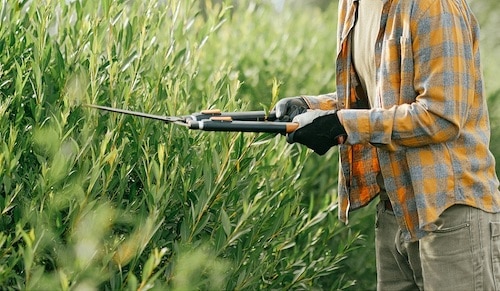
Trimming your conifer is essentially about controlling the tree’s shape and growth. And the optimal pruning window depends on the type of conifer.
In general, it’s best to wait until April before you prune a conifer. July-August is prime time for formative pruning — training the tree to grow into a particular shape — while August is the best month for thinning out the plant and removing larger branches.
Pruning outside of this window could create foliage browning.
Avoid radical pruning — it can stunt the tree’s growth and create unattractive bald patches around the tree. Cut away the dead wood, then trim the younger, healthy branches into shape.
Find out more about pruning specific plants in our comprehensive Help & Advice section — from yew trees and beech hedges to roses and hydrangeas.
The right tools for pruning conifers
Always use clean, sharp tools to prevent disease.
Here’s a list of tools you’ll need:
- Sharp secateurs with a sturdy blade — ideal for cutting thin branches and precision pruning on smaller bushes.
- Hedge trimmers — ideal for large conifers and dense bushes, such as beech hedges. The sharp, long blades make it easier to develop the tree into a specific shape, providing an even result.
- Pruning shears — long-armed shears, perfect for cutting through thicker branches. The long handles allow you to slice through thick stems and branches more easily.
- Tree saw — better for larger trees with thicker trunks, branches, and stems. Look for durable blades that remain sharp for longer.
Of course, these tools are there to help protect the tree. But don’t forget to protect yourself from scratches and cuts. Wear sturdy gloves and an eye protection mask!
Lawn doctor Louis says:
No matter which tools you choose to prune your conifer, make sure the blades are sharp and clean. This gives you a clean cut every time. Blunt blades leave an uneven cut, making the exposed wood susceptible to disease.
How to prune a conifer like a pro!
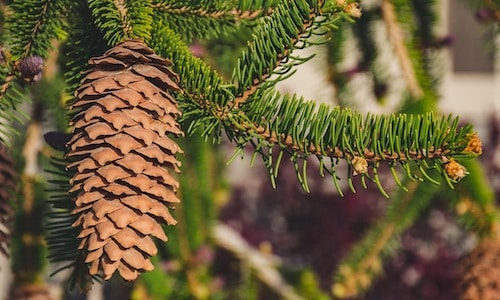
Follow these step-by-step instructions for excellent results every time:
- Check the weather forecast. Wait for a slightly cloudy day (without rain).
- Clean and sharpen your tools. Make sure electric devices are fully dry before you switch them on.
- Lay a tarpaulin around the base of the plant. This makes it easier to clear away the debris.
Then:
- Remove old, damaged, weak, and dead branches. Cut them back to the healthy wood or main trunk.
- Carefully cut back overgrown branches — but just to shape the plant. Over-cutting puts strain on the plant, and avoid removing too much green — conifers need their needles for photosynthesis.
- Stand back and assess your work. Conifers are often large, so viewing from a distance is essential to identify the overall shape. Keep cutting until the tree’s appearance is neat and tidy.
- Remove the cuttings to minimise diseases and pests.
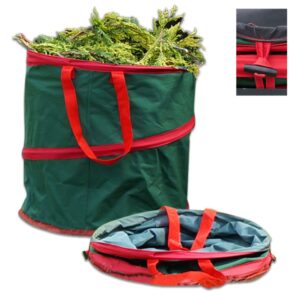
- Folds down for easy storage
- Self-supporting
- Sturdy handles for easy handling
Pruning conifers — the aftercare
Now that your conifer is the perfect shape and size, it’s time for aftercare to help your trees and bushes bounce back after pruning.
These are my top aftercare tips:
- Conifers love damp soil, so water regularly, especially after pruning. The soil should be damp, not wet, as soggy earth will rot the roots and weaken the plant.
- Use a specialist conifer fertiliser immediately after pruning to help the plant recover from the shock. I always recommend a slow-release fertiliser to prevent shocking the roots. Always follow the manufacturer’s instructions — don’t be tempted to over-fertilise.
- Remove grass and weeds around the tree’s base to reduce competition for nutrients and water. Scatter mulch around the trunk to prevent weeds and maintain moisture.
- Water well during hot and dry periods. In colder regions, use winter protection, such as extra mulch or garden fleece, to protect the trees from frost.
- Regularly check your tree for signs of disease and pest infestations — and act fast if you spot these problems. Otherwise, the plant can die quickly.
- Keep an eye on growth — small cuts are fine throughout the year, avoiding radical pruning once a year.
Garden doctor Louis says:
Always remove old, damaged, weak, and dead branches when pruning. This helps the plant concentrate its energy on growth instead of regeneration.
How to dispose of green waste after pruning your conifer

Conifers are poisonous, and their waste can damage nearby plants. Therefore, it’s essential to protect the immediate environment by thoroughly disposing of offcuts.
Check your local council’s website to find out if they accept conifer waste in your green bin. Alternatively, your local recycling centre (aka dump) may accept conifer waste.
And while it can be tempting to burn the green waste (it goes up a treat), most UK regions prohibit the burning of wet wood straight off the tree.
You can compost your conifer waste as long as there are no signs of infestation or disease. However, don’t use conifer composts for fruit and veg!
Mistakes to avoid when cutting conifers
Avoid the following common mistakes when pruning your conifer:
- Excessive cutting — this can stress the plant, which affects growth and vitality
- Messy cuts — Go for clean, straight cuts to avoid disease
- Using dirty or blunt tools — sharp tools give a clean, straight cut. Clean and sharpen your tools before and after pruning.
- Misunderstanding the species — each conifer species has specific pruning needs. Make sure you understand the specific needs of your conifers.
- Wrong time — avoid pruning when there’s a risk of frost. This can shock the plant and kill it.
FAQs
Hard pruning a conifer can stress the plant and cause poor growth, affecting the tree’s long-term health. Thin out the plant little by little over a couple of years.
It depends on the species. In principle, it’s possible to prune all year round, but avoid frost or excessive heat. For best results, prune from April to August.
Use clean, sharp tools. Use a string or rule to achieve straight cuts — make the base wider than the top to ensure the lower branches receive enough sunlight.
Ready to get started?
I hope I’ve given you all the info you need to prune your conifers successfully. But if you have any questions, send us an email. We’ll get back to you asap.
Or check out our comprehensive Help & Advice section for expert garden and lawn tips.
Thanks for reading!
Leave a comment
Your answer will be displayed on the site and the interested party will be notified by email.
Leave a comment
Have a question or want to share your experience? Leave us a comment.
Read more
The best tips and tricks for a lush green lawn
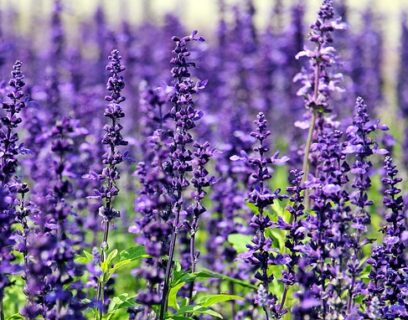 7 MIN
13 Sep
Lavender Cuttings: a step-by-step guide
7 MIN
13 Sep
Lavender Cuttings: a step-by-step guide
 11 MIN
10 Sep
Create Your Low-Maintenance Garden – Tips and Ideas
11 MIN
10 Sep
Create Your Low-Maintenance Garden – Tips and Ideas
 Scarifying Kit
All products after scarifying | Quickly restores the lawn after scarifying | Outsmart weeds quickly with the use of this kit
From: € 39.99
Scarifying Kit
All products after scarifying | Quickly restores the lawn after scarifying | Outsmart weeds quickly with the use of this kit
From: € 39.99
 Spring Lawn Care Kit
MOOWY’s choice for the spring | Quick recovery of your lawn after winter | A strong lawn prevents weeds
From: € 25.99
Spring Lawn Care Kit
MOOWY’s choice for the spring | Quick recovery of your lawn after winter | A strong lawn prevents weeds
From: € 25.99
 Long Lasting Lawn Fertiliser
Effective for 90 days | See results in 14 days! | Suitable for all types of grass and soil
From: € 13.99
Long Lasting Lawn Fertiliser
Effective for 90 days | See results in 14 days! | Suitable for all types of grass and soil
From: € 13.99
Do you want a lawn calendar?
🌱 All important maintenance moments for your lawn during the year. Leave your email and we will send you the lawn calendar for free.
Enter your email
Receive the lawn calendar in the mail
Enjoy a green lawn all year round!




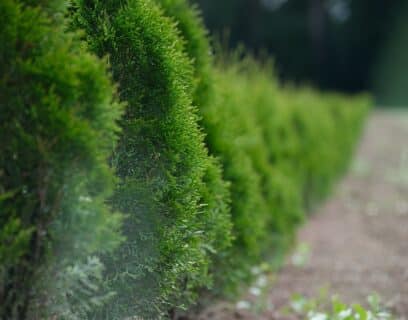





Comments (0)
There are no comments yet. Well then, what are you waiting for to
Be the first to write your comment!inaugurate this pretty page?
Do you have some comments?